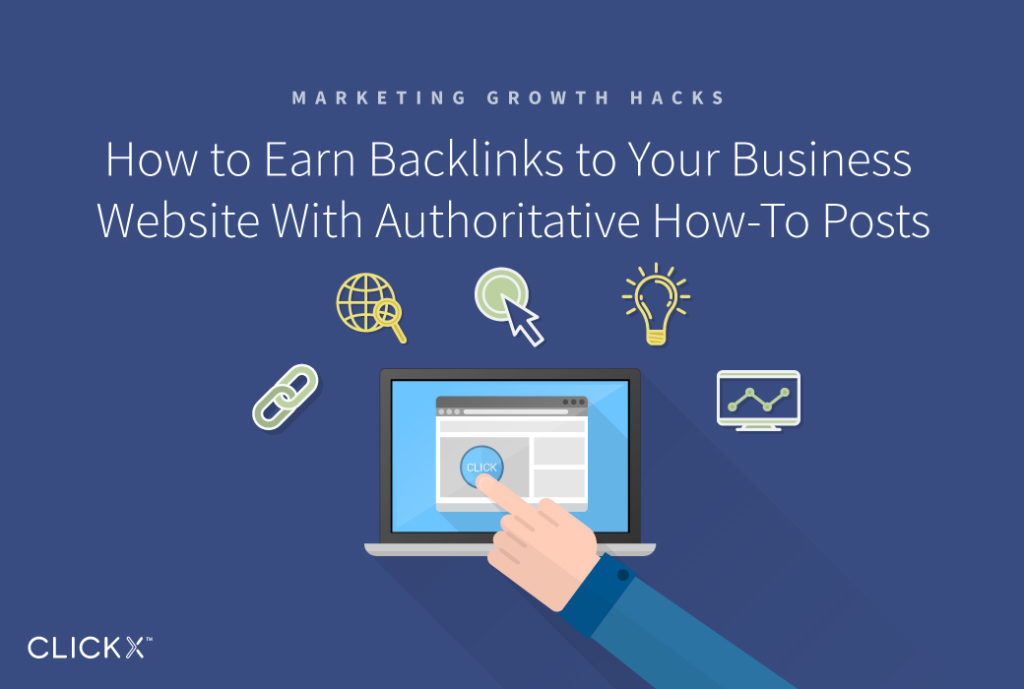How to Earn Backlinks to Your Business Website With Authoritative How-To Posts
Solving other people’s problems may be one of the most effective ways to earn quality backlinks to your business’ blog. This is because it hits two important elements—you appear reputable for sharing quality information, and it can make your life easier by properly educating your customers.
By learning to write clear and actionable how-to posts, you can build authority within your industry while attracting backlinks that boost your rankings. This is done by publishing content to fix a specific problem, then bringing awareness of its existence to the right people.
Today, we’ll walk you through the process of writing how-to posts step by step. All you need is an understanding of your business’ ethos and customers, and some time available to carry out the necessary steps.
Let’s get started!

Step 1: Research Relevant Topics
How-to posts are so effective because they act like a cookbook. You’re giving away a portion of your knowledge, but in a way that ultimately brings the customer back for more of your expertise.
[Tweet “How-to posts bring potential customers to you for your expertise.”]
Face it—unless you’re a keen home cook, no matter how many times you try making that lasagne, a professional chef is going to cook it better using the exact same recipe. When you want it done right, you go to a restaurant and pay good money to have someone make it for you.

Unless you’re a budding Jamie Oliver, your ability to cook a great lasagne stands no chance versus a professional chef.
Writing how-to posts are similar, only instead of writing about recipes, your topics will relate to your specific business. What ‘recipes’ can your business offer?
As you come up with ideas, use your knowledge of the customer buying cycle to your advantage. The assumption is that someone looking for an instructional guide is probably in the awareness stage—so don’t go for the hard sell just yet. Instead, focus on offering an amazing recipe.
How to Research Relevant Topics
Start by brainstorming the problems your company solves for its customers by writing down the variety of experiences they go through before requiring your help. Then, sort through these experiences and find the most common customer backstory.
Next, it’s time to dive into their narrative. Ask yourself the following questions:
- How did they likely try to solve their problem, before giving in and shelling out their hard earned money?
- What tips and tricks are most appealing to someone looking solve the problem themselves, rather than spend money?
- At what point did they realize they needed an expert to step in?
Write down every possible scenario, collating and tracking your ideas together in a document. You can eventually write a post for each of them, but for now you’ll start with the most effective ones.
How to Narrow Down Your Ideas to Solve One Problem
Here’s where you get to pick and choose your strategy, and there are three categories you can use to prioritize your topics. Whatever works best for you depends on both you and your business.
- The FAQ: Which customer scenarios are most commonly encountered?
- Low Hanging SEO Fruit: Which scenarios are the least well covered by existing blogs?
- Ease of Writing: Are there any customer scenarios you’re most familiar with personally?
Once you’ve decided how to approach and prioritize your how-to ideas, sort them accordingly, then start with the idea at the top of the list.
Step 2: Keep Your Content Simple
Experts and novices alike benefit from well-written, easy to read content. Here’s a few writing tips to achieve exactly that:
- Don’t ‘write down’ to your reader. Even if you’re writing for a complete beginner, condescending doesn’t go over well.
- Write as if your reader is intelligent, but completely unfamiliar with your topic. (Whether they are actually intelligent is a whole other story.)
- Clearly define the jargon related to your industry.
- Speak directly to the reader. That means using “you” more often than “we”.
- Don’t be afraid to link out to supporting sources. Quality external links are useful for the reader, plus they help your SEO.
How to Format Your Post
Start by listing any prerequisites for your how-to at the top of the post. This can include the tools and environment required, and the amount of time it takes.
This is where the guts of tutorial kicks in! Break your task into simple steps, and as you write, remember:
- Each task gets a heading, preferably in the form of an instruction.
- Describe the task in more detail beneath the heading. Images are always great for adding further context.
- Offer contrasting dos and don’ts in each section. Doing so illustrates common mistakes made at each step of the way.
At the end, summarize the steps your reader took and describe what their finished product should be. If it’s a tutorial for something physical, it’s best if you can show what the final result looks like with a video or image.
Step 3: Promote Your How-Tos to Indirect Competitors
You’re almost done. The how-to post is written, but you still need to encourage useful backlinks. The perfect people to help you will be your indirect competitors, so begin to make a list. In general, these businesses will:
- be similar businesses to yours,
- service different areas, and
- have a reputable blog or website.
After getting your initial list in order, you can rinse and repeat this process for any business that shares a mutual audience.
How to Make Contact
Firstly, be professional and personable – that means taking the time to actually learn about each business before reaching out. Next, review the recent work coming from the person you’re contacting, referencing and complimenting it in your outreach email. People can tell pretty quickly whether you’ve sent them the exact same email template without doing any research.
However, don’t spam people. There are two points to consider here:
- Do not continue to contact someone after they have declined your advances.
- Don’t mass email your potential business targets all at once.
Within your email, offer something creative in return for their help—for example, a free or discounted service or a sponsored contest on their blog—and to develop the relationship further, become an active commenter on their blog and social media sites.
In the end, your goal is to send the link as a resource for their customers. If your content is high quality, referencing it on their own blog will benefit both of you.
[Tweet “Well written how-to posts benefit both you and the people who share it.”]
What’s more, there’s a bonus benefit. Keep track of the companies that were responsive during this process. Now that you’ve built a relationship with them, you may be able to guest post in the future.
If you’re still struggling with following through on your outreach, here’s a full guide including templates to help you along.
Conclusion
Earning relevant industry backlinks for your business can be as simple as writing genuinely useful how-to blog posts. However, without a solid plan, the whole process could seem overwhelming.
In this post, we’ve offered three steps for creating how-to posts that will encourage backlinks from others. Let’s recap:
- Create a blog post that solves a problem customers struggle with.
- Keep the post simple so anyone can understand it.
- Promote the final post to businesses that would benefit from sharing it.
Have you tried your hand at using how-to posts to generate backlinks, or do you have any further questions before getting started? Let us know in the comments section below!
Image credits: Wikimedia.



